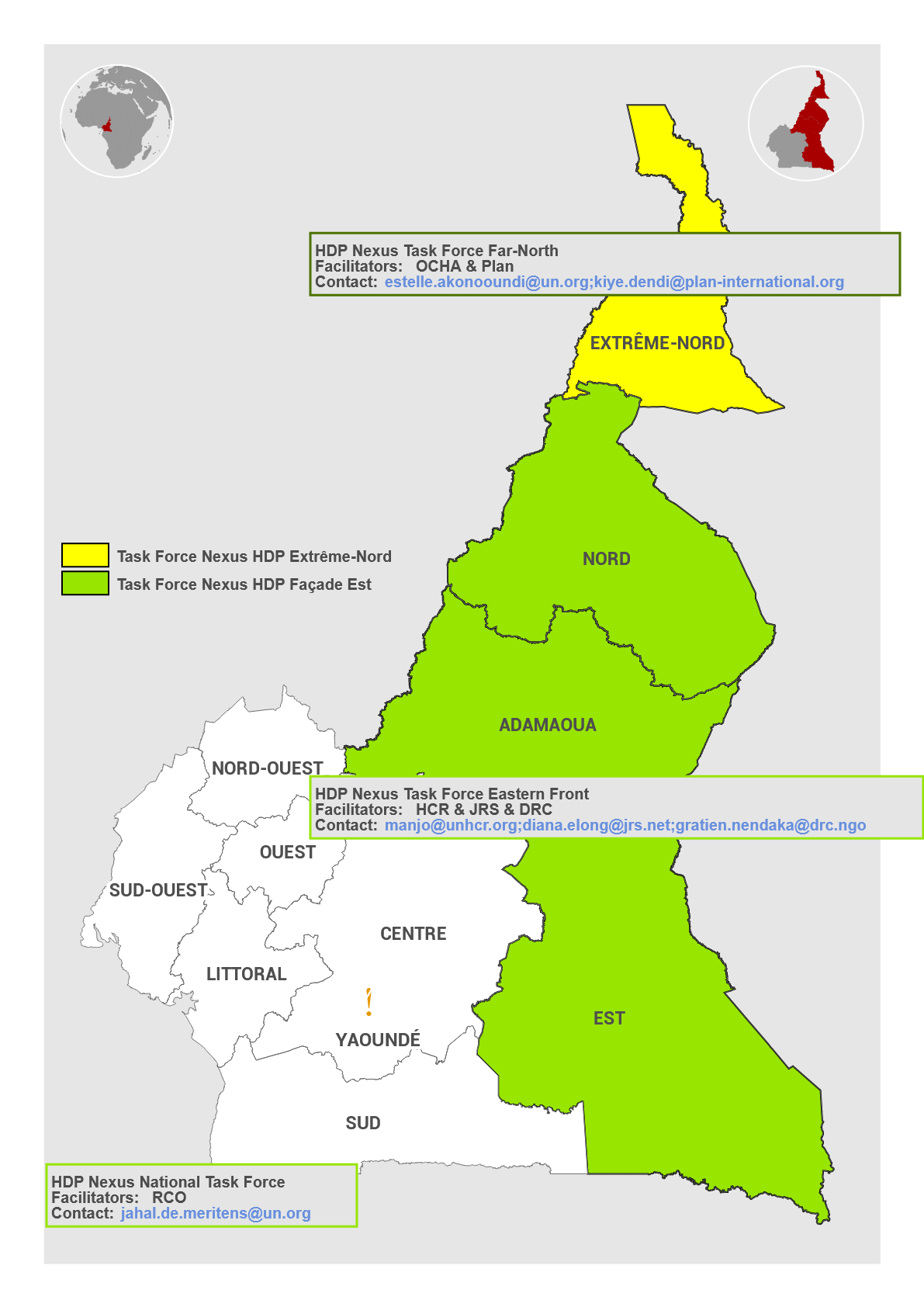The Humanitarian-Development-Peace (HDP) Nexus is defined as the interlinkages between humanitarian, development and peace actions. The Nexus approach aims to strengthen collaboration, coherence and complementarity. The approach seeks to capitalise on the comparative advantages of each pillar – to the extent of their relevance in the specific context – to reduce overall vulnerability and the number of unmet needs, strengthen risk management capacities and address root causes of conflict (OECD/DAC Recommendation on the Humanitarian-Development-Peace Nexus, 2019).
Cameroon was the first country to volunteer at the World Humanitarian Summit to implement the Nexus approach (previously called The New Way of Working). It became one of the seven priority countries of the UN Joint Steering Committee to Advance Humanitarian-Development Collaboration established by the Secretary-General in 2017.
An HDP Nexus Task Force was created in May 2019 to develop the HDP Nexus approach in Cameroon and facilitate its operationalisation at the community level.
The National HDP Nexus Task Force is chaired by the UN Humanitarian Development Peace Coordinator and includes more than a hundred representatives from the Government, UN Agencies, the World Bank, member states and donors, international and national NGOs and the private sector.
In addition to the National Nexus Task Force, two Regional Task Forces are operational: One covers the Far-North region and the other the Eastern Front (North, Adamaoua and East regions).
The vision of the HDP Nexus in Cameroon is based on a bottom-up approach. It seeks to create synergies between Humanitarian, Development and Peacebuilding interventions in municipalities where conditions allow for the three types of interventions. These municipalities are called Convergence Areas.
In the Far-North region, 25 municipalities have been selected as areas of convergence, of which 6 were prioritised to start the implementation in 2022.
In the Eastern Front, 21 municipalities have been selected, and 7 were prioritised for 2022.
The Humanitarian Development Peace (HDP) collective outcomes were defined as follows for Cameroon:
By the end of 2026, the most vulnerable populations (internally displaced persons, returned internally displaced persons, refugees, repatriated or economically inserted refugees, host and/or communities of origin) living in areas of convergence in the Far North, North, Adamawa, East, Northwest and Southwest priority regions, or in other regions affected by crises recover indiscriminately their fundamental rights and improve their physical well-being and social welfare.
The collective outcome is divided into three pillars and collective sub-outcomes:
Pillar 1: Basic social services
By the end of 2026, the most vulnerable people living in convergence areas and/or affected by the crisis access sustainable basic social services.
Pillar 2: Sustainable livelihoods and economic opportunities
By the end of 2026, the most vulnerable people living in convergence areas access sustainable livelihoods and economic opportunities.
Pillar 3: Protection, social cohesion and local governance
By the end of 2026, good local governance and the consolidation of Peace protect the fundamental rights of the most vulnerable people living in convergence areas.




